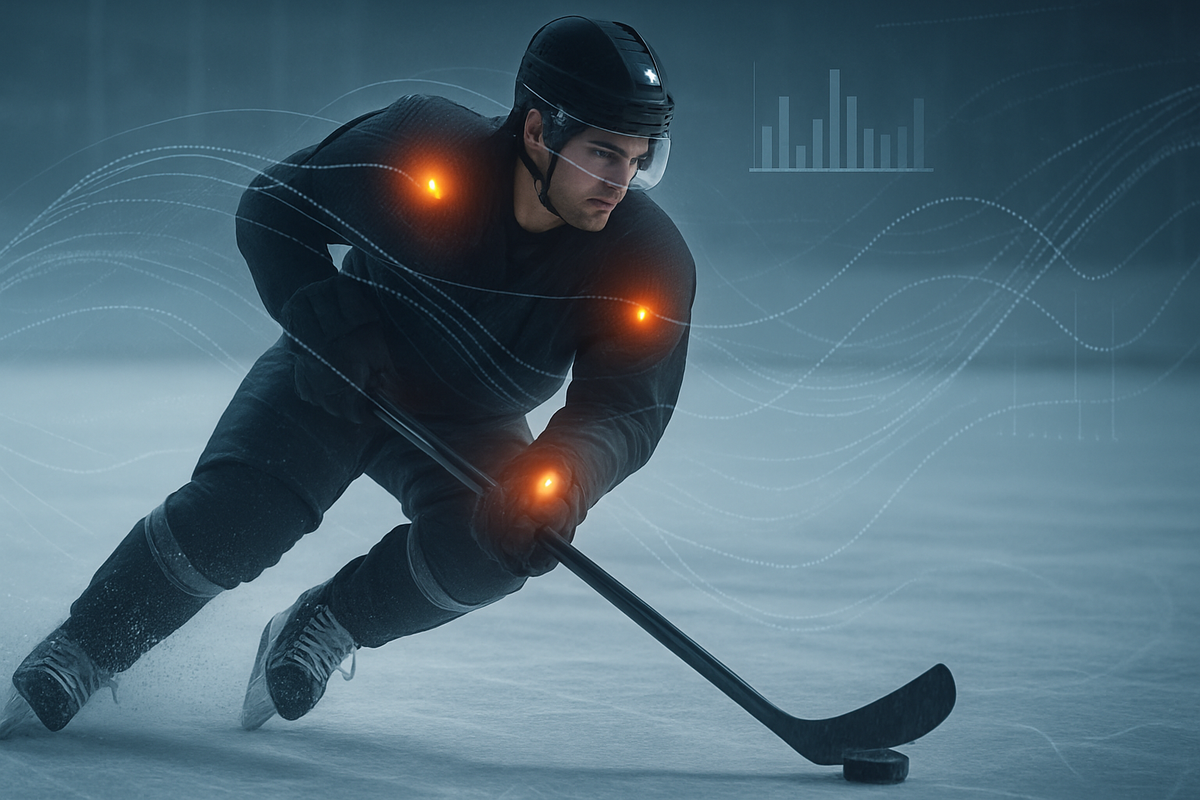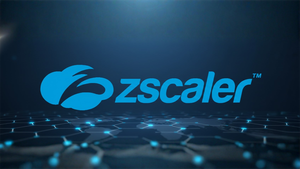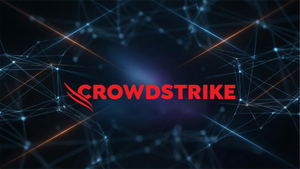
Helios, an innovative sports technology firm, has successfully closed a $2.2 million seed funding round, propelling its mission to democratize advanced hockey performance analytics. This significant investment is earmarked to scale its unique hardware-free wearable technology, designed to track and enhance player performance from youth leagues all the way to professional levels. The funding signals a strong vote of confidence in Helios's disruptive approach, which bypasses the need for complex arena infrastructure, setting a new benchmark for accessibility in sports performance tracking.
The immediate implications for the sports tech market are profound. By removing the traditional barriers of costly and intricate installations, Helios is poised to make sophisticated data-driven insights available to a much wider demographic. This could fundamentally reshape player development pathways, offering unprecedented analytical depth to aspiring athletes and seasoned professionals alike, and accelerating the adoption of advanced analytics across indoor sports.
Detailed Coverage: Helios Secures $2.2 Million to Revolutionize Hockey Performance Tracking
The $2.2 million seed funding round, which concluded in October 2025, represents a pivotal moment for the New Hampshire-based Helios. The capital infusion is strategically aimed at accelerating the company's operational scaling, broadening its market reach within the expansive hockey community, and further enhancing its proprietary wearable technology. This investment underscores the growing recognition of Helios's potential to redefine how hockey performance is measured and improved.
Helios's core innovation lies in its unique sensor, which seamlessly attaches to a player's shoulder pads. This sensor meticulously tracks critical on-ice metrics, including stride speed, agility, and total skating time. Crucially, the system operates without requiring any external infrastructure—no permanent arena hardware, no temporary beacons, and no complex calibration. This "hardware-free tracking technology" is a game-changer, addressing a major obstacle to widespread adoption, particularly at grassroots and collegiate levels. Complementing the sensor, Helios offers a video syncing feature that allows coaches to provide immediate, data-driven feedback, linking quantitative performance with visual context.
The company has already demonstrated impressive traction, with its technology currently utilized by the U.S. Women's National Team and all twelve schools within the ECAC conference. Helios has strategically expanded its focus beyond its initial youth hockey market, now serving junior, college, and professional tiers. The seed round attracted a distinguished group of investors, notably angel investors with deep roots in the hockey world, including Hockey Hall of Famer Ron Francis (President of Hockey Operations for the Seattle Kraken) and Colorado Mammoth forward Alex Kerfoot. Additional backing came from Stadia Ventures' accelerator program and the Oregon Sports Angels. Bill Near, the founder and CEO of Helios, an MIT graduate and former captain of the school's hockey team, spearheaded the development of this innovative system, driven by the need to overcome infrastructure limitations.
Initial market reactions to the funding news have been overwhelmingly positive, particularly within the sports technology and hockey industries. Industry publications highlighted the involvement of "Hockey Industry Veterans to Cap Table," signifying a strong validation of Helios's technology and market potential. The unique value proposition of a hardware-free tracking system was specifically lauded as a key differentiator, expected to significantly bolster Helios's ability to scale and integrate its technology across various competitive hockey tiers.
Market Ripples: Who Wins and Who Loses from Helios's Expansion
Helios's successful funding round and its innovative hardware-free approach are set to send ripples across the sports technology market, creating potential winners and losers among public companies. The key differentiator—operating without extensive arena infrastructure—positions Helios as a disruptive force, particularly in segments where traditional, hardware-intensive solutions have faced adoption challenges.
Companies that rely heavily on fixed hardware infrastructure for player tracking could face increased competition. Catapult Sports (ASX: CAT), a prominent sports performance analytics company, offers comprehensive wearable GPS systems and video analysis platforms that serve major leagues, including the NHL. While Catapult's offerings are diversified, Helios's cost-effective and simpler deployment model could challenge Catapult's market share, especially in youth, amateur, and lower-tier professional leagues that might find Catapult's broader systems overly complex or expensive. Catapult's consumer-focused "Catapult One" product, designed for individual athletes, could directly compete with Helios for market penetration in the accessible sports tech segment.
Conversely, Helios's expansion could open doors for significant partnerships and benefit several public companies. Data aggregators like Genius Sports (NYSE: GENI) and Sportradar (Public) could find Helios's rich, accessible performance data a valuable new stream to integrate into their offerings, especially for non-professional or developmental leagues not typically covered by their existing high-tier league partnerships. This could lead to data licensing or distribution agreements. Electronic Arts (NASDAQ: EA), which recently integrated official NHL EDGE player tracking data into its NHL 26 video game, might find Helios's data a compelling source for future game iterations, player scouting features, or interactive training modes, potentially leading to licensing partnerships.
Furthermore, cloud computing providers such as Amazon (NASDAQ: AMZN) via AWS, Microsoft (NASDAQ: MSFT) via Azure, and Alphabet (NASDAQ: GOOGL) via Google Cloud stand to gain as Helios scales. The exponential increase in data collected and analyzed will necessitate robust, scalable cloud infrastructure for storage, processing, and AI/ML algorithm execution, making Helios a significant client for these tech giants. Sports media and broadcasting companies, including The Walt Disney Company (NYSE: DIS) through ESPN, Amazon (NASDAQ: AMZN) with Prime Video, and Alphabet (NASDAQ: GOOGL) with YouTube TV, could also benefit from integrating Helios's data and "Instant Shift Videos" to enhance viewer engagement and analytical content. Lastly, sports equipment manufacturers like Nike, Inc. (NYSE: NKE) and Under Armour, Inc. (NYSE: UAA) might explore collaborations to seamlessly integrate Helios's sensor directly into their hockey protective gear, offering enhanced smart equipment.
Broader Implications: Helios's Role in the Evolving Sports Tech Landscape
Helios's $2.2 million funding round is more than just a capital injection; it signifies a pivotal moment in the broader sports technology landscape, aligning with and accelerating several key industry trends. Its hardware-free approach to hockey performance tracking is a testament to the ongoing evolution towards more accessible, intelligent, and user-friendly solutions in sports.
This event strongly reinforces the trend of democratizing advanced analytics. Historically, sophisticated performance data was largely the domain of professional teams due to cost and complexity. Helios's simpler, infrastructure-independent solution shatters this barrier, making high-level performance tracking accessible from youth leagues to semi-pro levels. This shift will empower a wider array of athletes, coaches, and parents with data-driven insights, potentially revolutionizing talent identification, training methodologies, and personalized development across all tiers of hockey. This aligns with the global sports tech market, which is projected to surpass $60 billion by 2030, heavily driven by AI and computer vision.
The rise of AI and computer vision in sports is another significant trend that Helios perfectly embodies. By leveraging AI and its patented Stride Recognition Technology (SRT), Helios interprets nuanced player movements from its sensor, providing metrics previously difficult to quantify. This mirrors the broader industry's move towards AI-powered real-time analysis, personalized training, and enhanced fan engagement. Furthermore, Helios's integration of data with video analysis, automatically generating player shift videos synced with performance data, is crucial. This trend of combining quantitative data with visual context is increasingly vital for effective coaching and athlete comprehension, providing a holistic feedback system that is becoming standard in modern sports.
While Helios's technology is disruptive, its widespread adoption also amplifies critical discussions around data privacy and regulatory implications. The collection of detailed biometric and performance data, especially from youth athletes, necessitates stringent adherence to privacy laws like GDPR and similar legislation. Companies like Helios must ensure robust security measures, transparent data usage policies, and obtain explicit, informed consent from athletes or their guardians. Concerns about data ownership and sharing with third parties, such as betting companies or video game developers, will remain paramount, requiring clear communication and ethical frameworks.
Historically, Helios's impact can be compared to other disruptive technologies that have fundamentally altered sports. The introduction of the stopwatch in the late 19th century allowed for precise time measurement, transforming training from anecdotal to quantitative. More recently, technologies like Hawk-Eye in tennis and cricket brought unprecedented accuracy and data to officiating. In player tracking, the advent of wearable GPS trackers (e.g., Catapult) in the 2000s revolutionized athlete monitoring in outdoor sports. Helios builds on this legacy by offering a more streamlined, infrastructure-independent solution specifically tailored for indoor hockey, addressing the unique limitations of traditional tracking systems in such environments. Its innovation marks another significant step in the ongoing technological evolution of sports, making advanced analytics more pervasive and impactful.
The Road Ahead: What's Next for Helios and Sports Performance Analytics
Helios's recent $2.2 million funding round provides a robust foundation for strategic growth, positioning the company for significant short-term expansion within hockey and intriguing long-term possibilities across the broader sports tech landscape. The company's "zero new infrastructure" advantage is a key enabler for its future trajectory.
In the short-term (next 1-3 years), Helios is expected to aggressively scale its operations and deepen its market penetration within competitive hockey. This includes further solidifying its presence in junior, collegiate, and professional leagues, leveraging existing successes with high-profile clients like the U.S. Women's National Team and the ECAC conference. Investment will also flow into product refinement, enhancing the accuracy of the Helios Core™ sensor, developing new metrics, and improving the user experience within its mobile app. Strategic partnerships, exemplified by its collaboration with Toronto Maple Leafs forward Matthew Knies, will likely continue, aiming to boost credibility and accelerate adoption, particularly in youth sports. Geographic expansion, building on its North American regulatory certification and domestic production, will also be a key focus.
Looking to the long-term (beyond 3 years), Helios has the potential for significant diversification. The company's technology is designed with "broad market opportunities across sports verticals," suggesting a strategic pivot to adapt its wearable sensor and AI analytics to other indoor or individual sports with similar movement tracking needs, such as basketball, figure skating, or speed skating. Further integration of advanced AI/ML could lead to predictive analytics for injury prevention, AI-generated personalized training plans, and even real-time adaptive coaching feedback. Helios could also explore deeper data monetization strategies beyond product sales, offering anonymized data aggregation services to larger sports organizations or media entities. The evolution of its subscription model to include tiered services with premium analytics or direct access to certified coaches presents another avenue for recurring revenue.
However, to realize these ambitions, Helios may need to undertake several strategic pivots or adaptations. Expanding into new sports will require substantial R&D to adapt its technology to different biomechanics and movement patterns. Business model flexibility, exploring different pricing structures (B2B vs. B2C, licensing) and talent acquisition in AI/ML expertise, will be crucial. Navigating the complexities of data privacy and cybersecurity will also be paramount as the company collects more sensitive athlete data. The sports tech market, while booming, presents challenges such as high initial investment requirements for continuous innovation, complexities in integrating with existing ecosystems, and fierce competition. Helios's success will hinge on its ability to maintain its innovative edge, effectively scale, and clearly articulate the actionable insights derived from its data.
Final Whistle: A New Era for Hockey Analytics
The $2.2 million funding secured by Helios marks a significant turning point for hockey performance analytics and the broader sports technology market. The key takeaway is the powerful validation of Helios's hardware-free, AI-driven approach, which promises to democratize advanced player tracking and development. By eliminating the need for costly and complex arena infrastructure, Helios has removed a major barrier to entry, making sophisticated insights accessible to a vast spectrum of athletes and organizations, from aspiring youth players to professional teams.
Moving forward, the sports technology market is poised for explosive growth, driven by an insatiable demand for data-driven decisions, AI-powered insights, and immersive fan experiences. Wearable technology, in particular, will continue its rapid evolution, offering increasingly precise biometric and performance data. Helios's innovation aligns perfectly with these trends, positioning it as a frontrunner in delivering actionable, real-time feedback that fosters smarter training and accelerated player improvement. The company's ability to seamlessly integrate data with video analysis is a critical feature that will become standard in effective coaching methodologies.
The lasting impact of Helios's technology lies in its potential to fundamentally alter how hockey players are developed and how performance is understood. By providing objective, granular data from a young age, it can foster a culture of continuous improvement, personalize training regimens, and potentially even influence scouting and talent identification processes. This shift towards accessible, data-informed athletic development is not just about technology; it's about empowering athletes and coaches with the tools to unlock their full potential.
Investors should watch for several key indicators in the coming months. For Helios specifically, monitor its progress in scaling operations, expanding market penetration within hockey, and potentially exploring new sports verticals. Crucial metrics will include user adoption and retention rates, as well as continued product development and innovation in its AI and machine learning capabilities. For the broader sports technology industry, keep an eye on the accelerating integration of AI across all facets of sports, further advancements in wearable technology, and the emergence of strategic partnerships and acquisitions as larger tech companies and sports organizations seek to integrate innovative solutions. The investment in Helios underscores the ongoing confidence in the transformative power of sports technology, highlighting a future where data-driven insights are not a luxury, but a fundamental component of athletic excellence.
This content is intended for informational purposes only and is not financial advice






